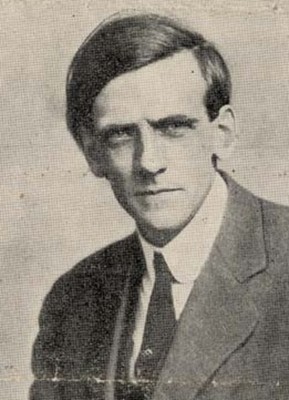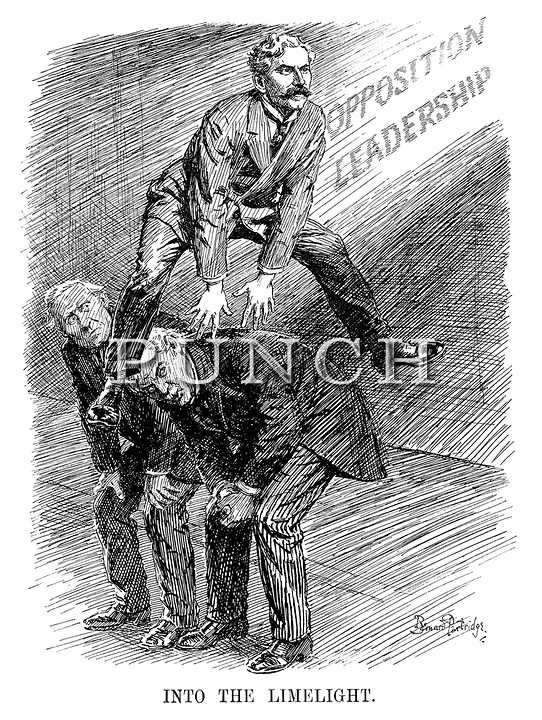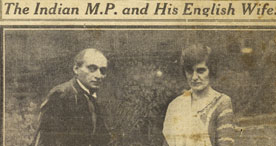by Pete Goddard and Atul Hatwal
After the general election in November 1922, Labour had a lot to feel good about. It broke three figures for the first time with 142 MPs – 27 more than the total for Lloyd George and Asquith’s Liberal factions put together and firmly established itself as the second party of British politics. Not the first party, true, but one step at a time eh?
Even better, the wave of Labour gains had seen the return of many of the party’s big beasts who had been swept away in Lloyd George’s landslide of 1918.
Returnees included acerbic left wing orator Phillip Snowden, Poplar’s most popular socialist George Lansbury and, the battling pacifist Ramsay Macdonald himself.
The character of this new parliamentary Labour party was quite different to its predecessors. Two, not entirely unconnected, changes marked the 1922 intake: increased representation for the left and the arrival of a number of middle class Labour MPs (including one Clement Attlee, so don’t mock).
The rise of the left was best illustrated by the increased influence of the Independent Labour Party (ILP). In 1918, 3 MPs had been sponsored by this socialist society. By 1922 this had grown to 32.
Although the centre and centre-right bloc of trade union sponsored MPs was still the largest at 85, for the first time the left had a broad caucus to challenge the right.
The ILP mob was sufficiently large that it even had its own left-wing. This was led by the so-called red Clydesiders, part of the contingent of 30 notably left-wing Scottish MPs. The name may sound like a playground torture (“Sir, that bully just gave me a red Clydesider), but these were committed and uncompromising socialists who weren’t averse to the idea of a workers revolution.
Leading lights included the former school teacher Jimmy Maxton (admiring biographer: Gordon Brown, who clearly failed to absorb every lesson this teacher had to offer) and self-made businessman John Wheatley.

With school teacher Jimmy Maxton in the house, inattentive Labour colleagues lived in fear of the well-aimed blackboard eraser
But even the red Clydesiders weren’t the most left-wing members of the class of ’22. One of parliament’s two communists, Shapurji Saklatvala was let into the Labour gang after he pledged to abide by the constitution of the party, becoming Labour’s first non-white MP and setting a new benchmark for what it meant to be on the left of the Labour party.
Parallel to this socialist tilt, as well as partially driving it, was the arrival of a new class of MP.
In 1918 Labour MPs were generally working men, none of whom had been to public school and only one who had been to university and wouldn’t shut up about it.
In 1922, 21 were university graduates and 9 were public school educated. Labour also acquired its first members of the landed gentry: ex-Liberal MPs such as Arthur Ponsonby (grandson of Lord Grey of the 1867 Reform bill) and Sir Charles Trevelyan, nephew of Lord Macaulay, brought some blue blood under Labour’s red flag.
Even though the middle class arrivistes were the minority, they changed the tone and experience of the PLP profoundly. They replaced the break room Hob Nobs with Duchy Originals for starters. In the chamber they tended to be more outspoken, more outraged and more wedded to left-wing ideals than their older union brethren.
The combination of the two changes: the shift left and increase in middle classes made Labour’s 1922 intake one of the most volatile it’s ever had.
So, with the new line-up of the PLP ready for action, the first order of business was to select a leader.
Of course, they already had a leader: J.R.Clynes. After securing Labour’s best ever electoral performance, he probably deserved a rousing endorsement.
He didn’t get it, of course. This is the Labour party.
Before the parliamentary party was due to meet, the newly-empowered left was in ferment about out how to eject the centrist Clynes.
They were convinced he’d held them back. If only the platform had been more left-wing, Britain would by now have been under a hugely popular Labour government transitioning into a socialist utopia. Probably.
The ILP met in advance to thrash out an acceptable lefty candidate. One of the new Hibernian (by way of Spitalfields) firebrands, Manny Shinwell, proposed the left’s standard bearer should be Ramsay Macdonald.

By moving from East London to Glasgow, Manny Shinwell attempted to create Britain’s most impenetrable accent
Two spoke against. Jimmy Maxton went first, stating his preference for someone more authentically left wing and more geographically Glaswegian.
Then Philip Snowden contributed. He spoke with the passion of a man who apparently hadn’t forgotten 1902. That was when party secretary Macdonald was responsible for the unceremonious dumping of a charming, witty and dashing prospective candidate for Clitheroe – a young Philip Snowden.
Despite these interventions, the other speakers were supportive and Macdonald won the vote, becoming the ILP candidate for the final face-off with Clynes.
21st November 1922 was the decisive meeting of the parliamentary party.
And the decisive issue in the decisive meeting was… benches.
Specifically, the Speaker of the House of Commons had proposed that Labour share the opposition front bench with the Liberals. Unlike the previous parliament, when the Liberals were notionally in government as well as opposition, they were now definitely not in power and for the first time Britain had two opposition parties with over 100 seats each.
The choice should have been clear: Labour had more seats. But this was a new situation, those Liberals were pretty decent chaps and besides, many were members of the same club as Mr Speaker.
“But that’s not fair,” said the party, reasonably enough, “We bagsied the front seat.” “Our legs are longer,” said some, “I feel sick if I sit in the back,” said others. The mood was skittish.
At the leadership meeting, J.R.Clynes opened proceedings explaining how he had dealt with all this. Unfortunately, his explanation seemed to be that he’d failed to arrange the parliamentary equivalent of the precious double-seat and Labour was going to have to share the bench.
Macdonald was up next and on this issue the pacifist was ready to fight. He rose and gave a fiery speech on the type of opposition Labour should be: passionate, self-confident and positioned as not just the main, but the only alternative to the Conservatives.
Most of all, that meant a front bench all to themselves, dammit.
Macdonald also managed to slip into his speech nods to the left to reassure them that he was still their candidate, while also reminding the right wing that he had been a measured, consensual leader during his previous tenure.
And if that wasn’t enough, in the words of red Cydesider David Kirkwood, “His head was a thing of beauty. Black hair waved over a fine brow.” Er, right.
J.R. Clynes, on the other hand, was a small and unassuming chap whose head was basically just an ordinary head. A head that seemed a little too willing to share a front seat at that.
The vote hung in the balance. Most MPs going into the meeting, including Macdonald, expected Clynes to triumph. After all, most of the trade union bloc was loyal to him.
But as the votes were counted it became clear the challenger had squeaked it: 61 to 56 votes.

The arrival of more public schoolboys on Labour's benches meant the party was happier to join in with Commons’ tea room japes
Mac was back.
Pete and Atul are not historians
Tags: Atul Hatwal, J.R.Clynes, Labour history uncut, Labour leadership, Pete Goddard, Ramsay Macdonald










A sprinkling of ex communists baronets east enders glaswegians exliberals and baronets unionites middle classers and snowden, now thats what I call a real one nation party.
Self-made businessman Wheatley…I’ve often wondered; what exactly did he make himself out of?